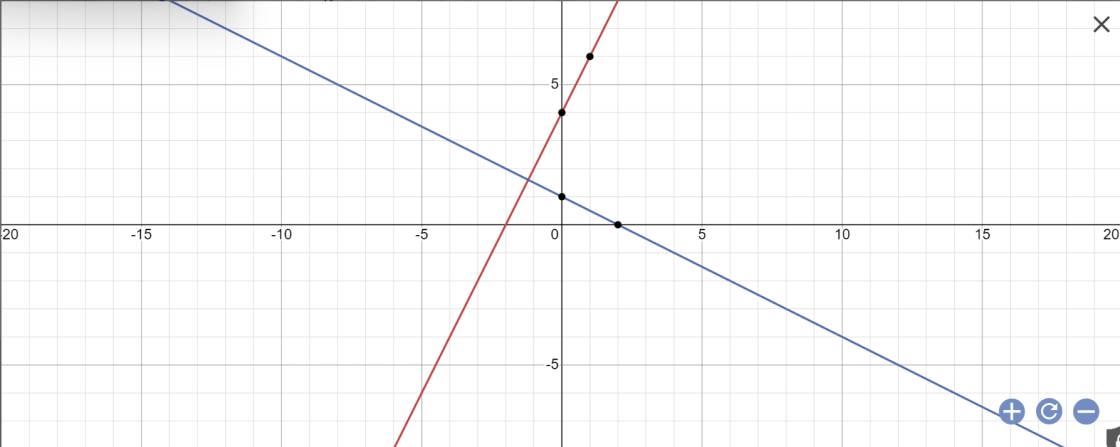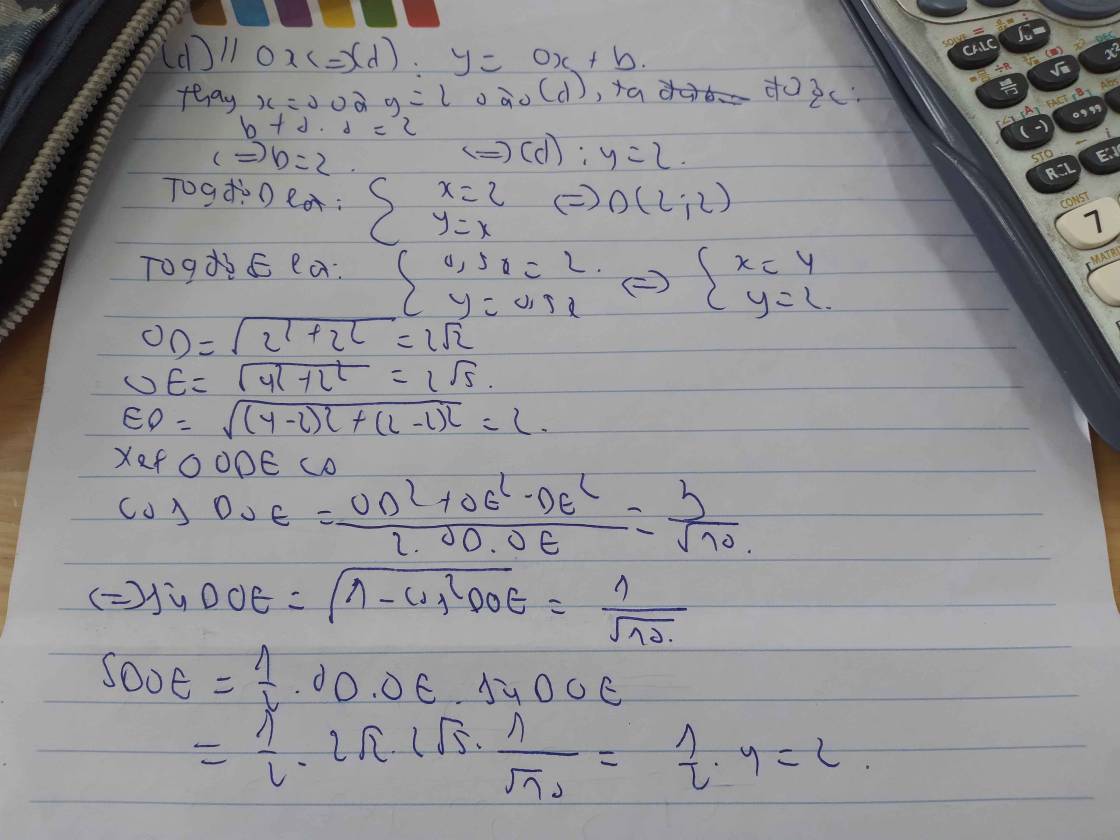Cho đường thẳng d: y=-2x+1 và và d cắt Ox tại A, d cắt Oy tại B. Hãy tính:
a) Từ O đến d b) Diện tích tam giác AOB
Bài 4: Cho đường thẳng d1: y = 2x – 3 và d2: y = -3x + 7.
a) Vẽ d1, d2 trên cùng một hệ trục tọa độ.
b) Tìm tọa độ giao điểm của d1, d2.
Bài 5: Cho hai đường thẳng d: y = -3x + 1 và d’: y = -x – 2. Tìm tọa độ giao điểm của d và d’.


